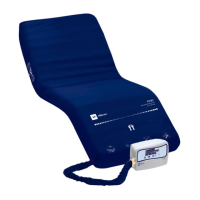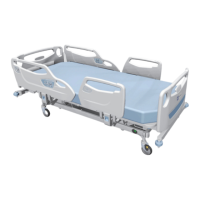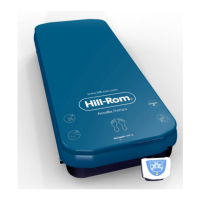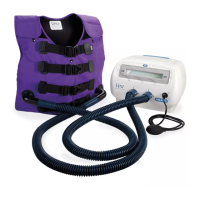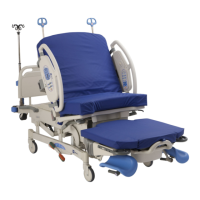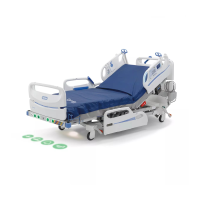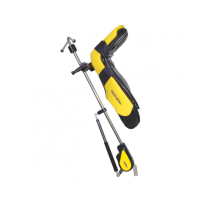Surfaces
Progressa® Bed Instructions for Use (171528 REV 9) 65
Warning—Sleep surface impermeability and pressure relieving capabilities of the sleep surface could
be affected by needle sticks or other bladder punctures. Caregivers should be instructed to AVOID
surface cover and bladder damage caused by improper use of x-ray cassette holders and sharp objects
that may puncture or lacerate the surface. Reduced performance could occur.
Rotation
The rotation mode provides gentle, side-to-side, continuous lateral rotation therapy (CLRT) to aid in the
prevention and treatment of pulmonary complications related to immobility. Patients can be positioned
laterally on the right or left side with varying amounts of turn and pause times to match each individual
patient’s condition. Pressure redistribution is provided when the rotation mode is active.
Rotation Reminders:
• Rotation therapy will be suspended when:
– Any siderail is lowered. To restart rotation - raise siderail to the up and locked position.
– Head of Bed (HOB) is raised higher than 40 degrees. To restart rotation - lower HOB.
– Foot of Bed (FOB) is lowered more than 30 degrees. To restart rotation - raise FOB.
– Chair position is attempted. To restart rotation - exit chair position.
– Percussion/Vibration, Max-inflate, or Turn Assist is active.
• A message will show on the GCI when therapy has been suspended for any of the above conditions.
• If CPR is activated, rotation therapy automatically stops and Max-inflate is activated. If Max-inflate is
active for 60 minutes the surface will return to normal mode and not the previous therapy mode.
• Check the GCI screen if you are uncertain why the bed is beeping - the reason will be displayed on
the GCI screen.
To help prevent injury and/or equipment damage, obey these warnings:
• Warning—Observe lines closely during rotations and/or patient positioning. Always use good
line management techniques to prevent lines and tubing from becoming dislodged during
rotation and/or patient positioning.
• Warning—During rotation, monitor patient rotation position and make sure that the patient
stays centered on the mattress with shoulders correctly aligned and that there is sufficient slack
in lines for patient movement and mattress rotation.
Setup
1. Put the patient on the bed.
2. Align the shoulders with the shoulder position label located on the inside of the head-end siderail.
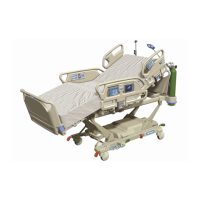
